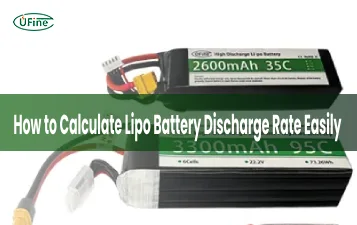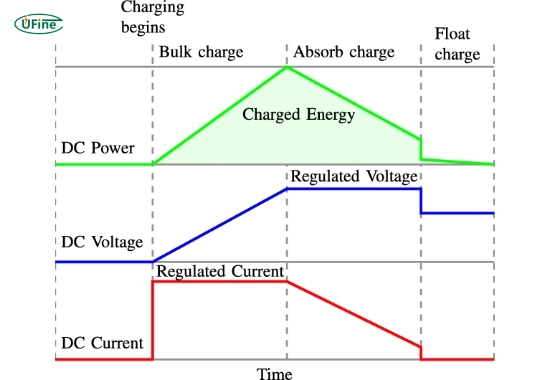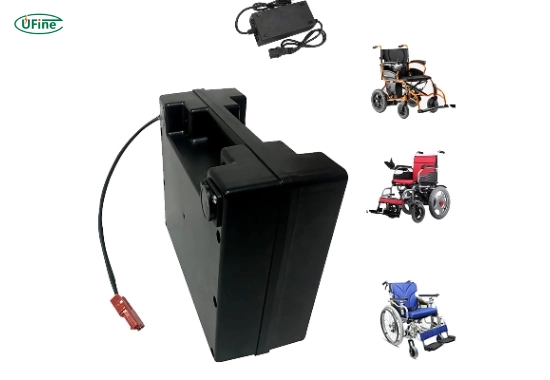Power chair batteries are essential for users dependent on mobility devices for independence and daily comfort. But what is fast-charge technology, and how does it help power chair users? Fast-charge technology allows batteries to charge quickly without harming the battery’s health. This is a game-changer in mobility equipment, letting users spend more time living and less time waiting for their chairs to charge.
This article will explain fast-charging, how it works, and why it benefits power chair batteries. Whether you’re a user, caregiver, or just curious, this guide will help you understand everything in simple terms.
Part 1. What is fast-charge technology?
Fast-charge technology pushes a higher current into a battery, allowing it to charge faster than standard charging methods. A typical battery might take 8-10 hours to charge fully, but with fast-charge, that time can drop to 2-4 hours, depending on the battery type and charger.
This is possible due to smart chargers and lithium-ion battery chemistry, which can handle faster currents without overheating or degrading.
Part 2. How do power chair batteries work?
Power chair batteries store electrical energy and release it to power the chair’s motor. Most power chairs use sealed lead-acid (SLA) or lithium-ion (Li-ion) batteries. These rechargeable batteries are designed for deep cycling, meaning they can run down and charge up repeatedly.
- SLA Batteries: Cheaper but heavier, slower to charge.
- Li-ion Batteries: Lighter, longer-lasting, and faster to charge.
The battery connects to a controller and motor, letting users move smoothly, adjust speeds, and even climb small slopes.
Part 3. Why fast-charging matters for power chair users
Time is precious, especially for people who rely on power chairs. Fast-charging reduces downtime, which makes a big difference in daily life. Imagine leaving the house but waiting 6 more hours for a full battery. Fast-charge tech cuts that wait time significantly.
Here’s why it matters:
- More freedom: You can charge your chair while having lunch or resting.
- Less planning: No need to charge overnight all the time.
- Emergency use: Quickly charge enough to get where you need to go.
Part 4. What makes a battery fast-charge capable?
Not all batteries can handle fast charging. To be fast-charge capable, a battery must have:
- Advanced chemistry (usually lithium-ion)
- Built-in safety systems to manage temperature and voltage
- Smart charging compatibility with chargers that communicate with the battery
If your power chair uses older SLA batteries, it likely can’t benefit from fast-charging unless it is upgraded.
Part 5. How do smart chargers work?
A smart charger adjusts the current and voltage during the charging process. It also monitors battery temperature, charge level, and health, preventing overcharging, which can damage batteries.
Smart chargers use multi-stage charging:
- Bulk charging: Delivers high current to fill the battery quickly.
- Absorption: Slows down to avoid overheating.
- Float stage: Maintains full charge without overcharging.
This system is key for fast-charging without damaging power chair batteries.
Part 6. Are there risks to fast-charging power chair batteries?
When done correctly, fast-charging is safe. However, using the wrong charger or an incompatible battery can lead to:
- Overheating
- Reduced battery life
- Fire hazards (in rare cases)
To stay safe:
- Use manufacturer-approved equipment
- Avoid off-brand chargers
- Monitor charging in the beginning
Always read your charger’s manual before using a fast charger.
Part 7. How to upgrade your power chair for fast-charging?
If your current power chair uses SLA batteries, consider switching to lithium-ion. Here’s how to do that:
- Check compatibility: Not all models allow battery upgrades.
- Consult the manufacturer: They may offer upgrade kits.
- Buy a compatible smart charger: You’ll need one with Li-ion batteries.
- Get professional help: Have a technician install the new battery to avoid errors.
Upgrading can be expensive upfront, but it pays off with faster charging and longer battery life.
Part 8. How long does it take to fast-charge a power chair battery?
Charging time depends on the battery size, type, and charger capacity. Here’s a general idea:
- Standard SLA battery: 8–10 hours
- SLA with high-output charger: 6–8 hours
- Lithium-ion with fast-charge: 2–4 hours
Always check the specs of your battery and charger. Some new models offer 80% charge in just 1 hour.
Part 9. Tips to extend battery life during fast-charging
Fast-charging is excellent, but you still want to protect your battery. Here are some tips:
- Charge before the battery drops below 20%
- Avoid charging in extremely hot or cold places
- Unplug when fully charged
- Use only recommended chargers
- Store batteries at 50-70% charge if unused for long
Treat your battery sufficiently; it will serve you longer, even with fast charging.
Part 10. What’s the future of fast-charging for mobility devices?
Technology is moving fast. In the next few years, we can expect:
- Even faster charging times (under an hour)
- Wireless charging pads for power chairs
- Solar-powered charging stations
- AI-powered charging systems that adapt to your usage
Manufacturers are investing heavily in mobility tech, and power chair batteries will improve. Users will gain more freedom, reliability, and independence.
Part 11. FAQs about power chair batteries
Can I fast-charge my existing power chair batteries?
Only if your battery and charger are compatible will SLA batteries usually not support fast charging unless modified. Lithium-ion batteries are better suited.
Will fast-charging damage my battery?
No, not if you use the correct charger and battery system. Smart chargers protect the battery during fast charging.
Is it worth upgrading to lithium-ion batteries?
Yes, if your chair supports it. Lithium-ion batteries offer faster charging, longer life, and lighter weight.
How often should I charge my power chair battery?
Ideally, after each use or when it drops below 30–40%. Please don’t wait until it hits zero.
What’s the best charger for fast charging?
A smart charger designed by the power chair’s manufacturer is the safest and most effective option.
Related Tags:
More Articles

LiPo Battery Discharge Rate Guide & Calculation Tips
Understand LiPo battery discharge rates, C-ratings, and how to calculate max current. Essential guide for RC, drones, and electronics users.
High‑Capacity 3S LiPo Batteries: 5000 mAh vs. 10000 mAh
Compare 3S LiPo 5000mAh vs 10000mAh batteries by weight, power, and use. Find the best fit for your drone, RC car, or boat setup.
Top 5 Applications for Small 3S LiPo Batteries
Small 3S LiPo batteries power drones, RC gear, wearables, and robotics with high energy and low weight. Making them ideal for compact electronics projects.
Building and Charging Your Own 3S LiPo Pack: A Step‑by‑Step Guide
Learn how to build, balance, and charge a 3S LiPo battery pack safely at home with this complete DIY guide for hobbyists and beginners.
How to Choose the Right LiPo Battery Plug Type?
Discover the best LiPo battery plug types, how to choose them, and expert tips for safe usage, soldering, and maintenance.





